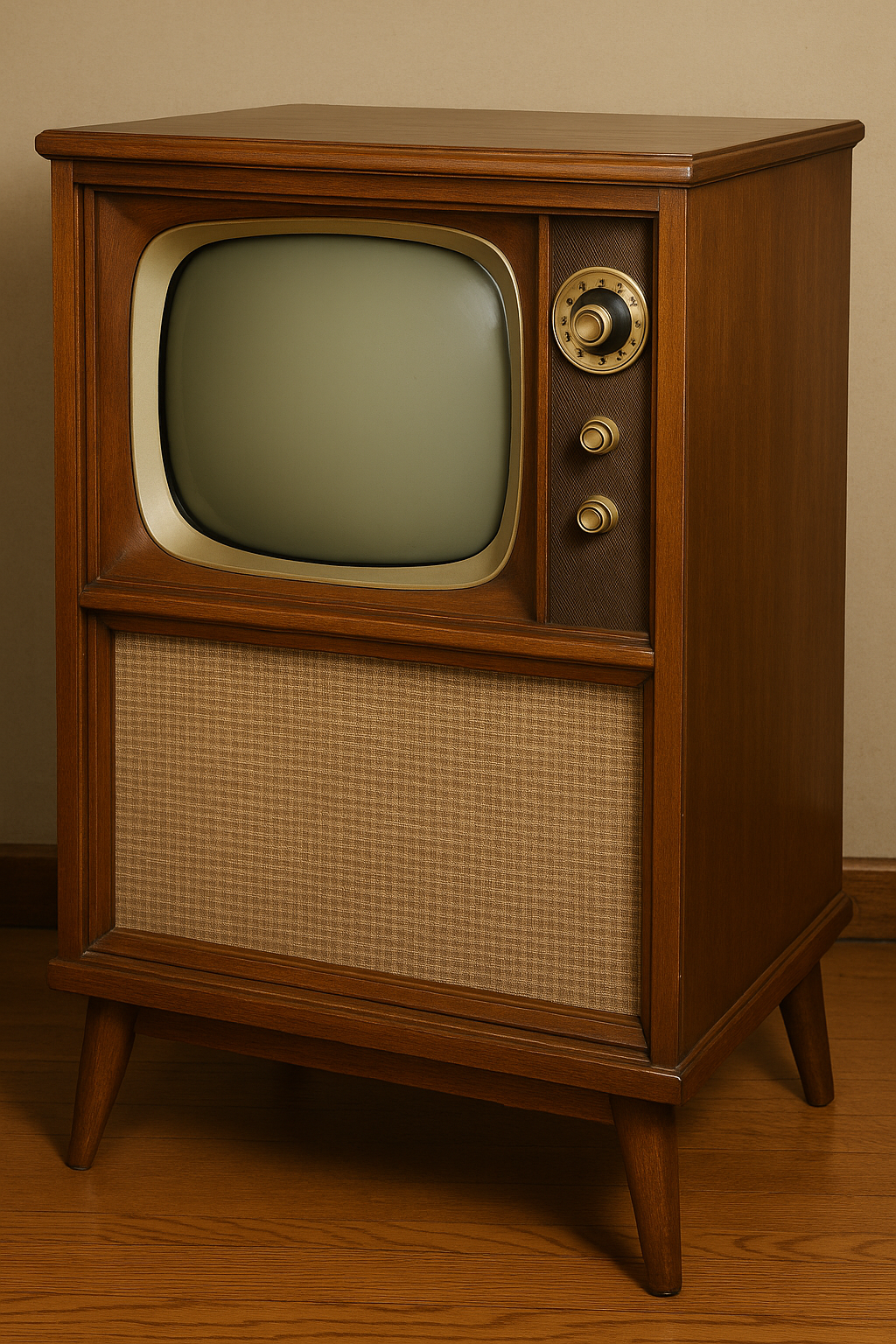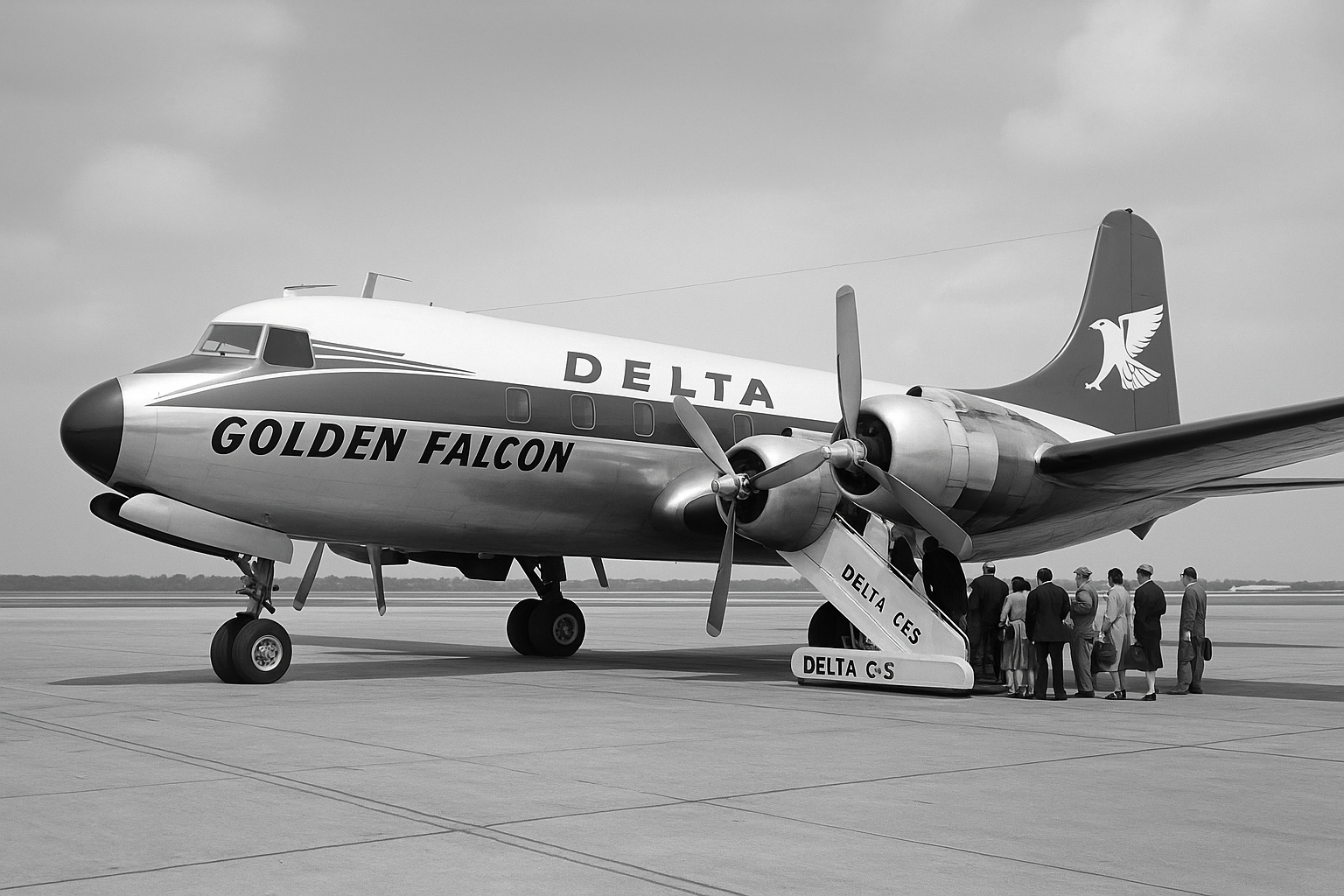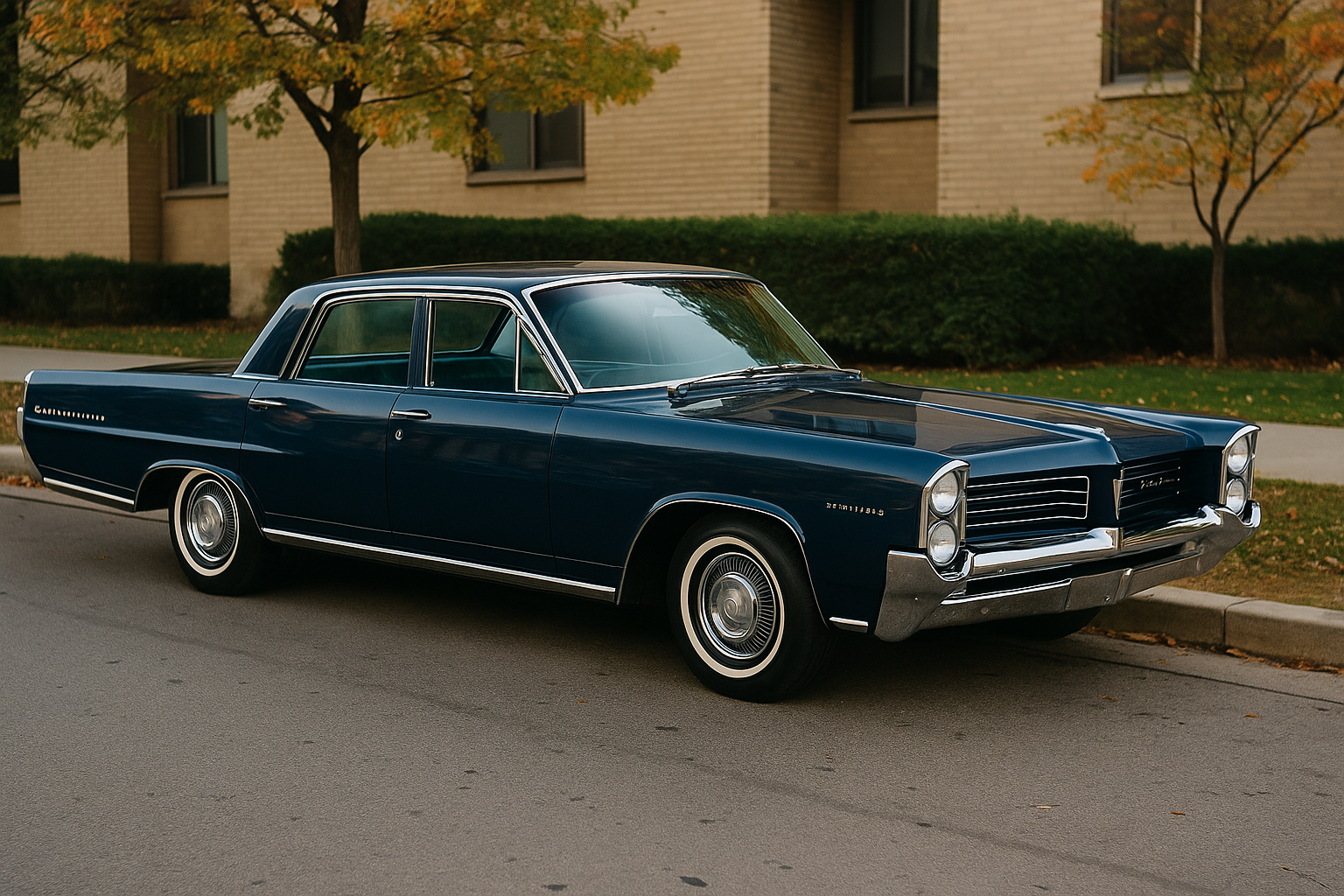Volume 1
Volume 1: Before the Machines (1951–1968)
I was born on November 23, 1951, and grew up in a warm, tight-knit household in Flushing, Queens. From an early age, I experienced the closeness of family dinners, the daily visit from the milkman who left bottles in our front milk box, and the vegetable truck that rang its bell twice a week as it rolled down the street. It was a different era, where ingredients came to the doorstep. To get meat, you went to the butcher. For fish, to the fish store. Supermarkets hadn’t yet become widespread.
My parents loved to play games. My mother played Mahjong weekly with her friends, and my parents hosted poker games both at home and at others’ homes. But the most formative were the nightly games we played in the kitchen — Pinochle and Cribbage. Both games require calculation, memory, and strategy. These nightly sessions trained my mind early and helped shape my future approach to logic and problem-solving.

Our first television arrived shortly after — a huge wooden cabinet housing a small 13-inch black-and-white screen. I was captivated by westerns: Hopalong Cassidy, The Rifleman, and The Life and Legend of Wyatt Earp. That obsession shaped my 4th birthday party, which included a toy gun belt with greenie stick-um caps, a six-shooter, and an air rifle that made a loud bang when cocked. I loved firing it inside the house — much to my mother’s annoyance. Six months later, it disappeared. I never had another birthday party as a child.
Preface: Life Before the Remote Control
When our family brought home our brand-new television, it did not come with a remote control like today. If you wanted to change the chanel of adjust the volume, you had to get up, walk to the set, and turn a dial.
Our time, remote controls begam to appear - first as clickers that used sound to change channels, and later infrared devices appeared and became a standard feature. I remember our first RCA color television in out Douglaston house, in 1963, came with a remote control.
Read the full story of the television remote control
Tonsils out
As a young child, I went through every common illness of the era — measles, mumps, chickenpox, German measles, and even jumbo hives — which eventually led to the removal of my tonsils when I was four. I believe the operation was done in a doctors office -- not a hospital The one thing I still remember vividly is the metallic taste of the strainer they forced into my mouth while I was in the recovery room with lots of crying children.
Family Business
My grandfather was a partner in a plumbing supply company called Sanitary Dash, and both my father and his paternal twin brother Gerald worked there after returning from World War II. Our two families lived on opposite corners of the same block, and I regularly played with my cousins. Eventually, Sanitary Dash decided to move the company to Worcester, Massachusetts. My uncle moved with them, but my parents chose to stay in New York. That decision split our family in a permanent way.
After leaving Sanitary Dash, my father set out to build something truly his own: Ace Brass MFG Corp, located at 999 Metropolitan Avenue in Brooklyn. To launch the business, he borrowed $40,000 from my Uncle Harry, who was married to my Aunt Judy. With that seed capital, he leased a modest industrial space and equipped it with the machinery necessary to manufacture brass plumbing fittings — the kind you’d find beneath nearly every kitchen or bathroom sink: tailpieces, J-bends, slip joints, flanges, and coupling nuts. These parts weren’t cast — they were fabricated from long lengths of thin-wall brass tubing, which were cut, bent, threaded, and polished entirely in-house.
The work was more delicate than it might sound. One of the most critical machines on the floor was the bending machine — a large, precise piece of equipment that had to curve the thin-walled brass tubing just right. Bend it too fast or at the wrong angle, and the tubing would crimp, fold, or even fracture. Clean, functional curves demanded not just the right machinery, but a careful operator with a feel for the material. Alongside the bender were cutting saws, threaders, drill presses, and polishing stations, all of which required daily adjustment and constant attention to detail.
While he was setting up Ace Brass during the week, my father was still bound by his exit agreement with Sanitary Dash, which required him to spend every weekend in Worcester, Massachusetts, helping them set up their new factory. So for months, he worked double time — building his new business while honoring commitments to the old one. As a child, I didn’t yet grasp the business complexity of it all, but I keenly felt his absence. Weekends were quieter, and the missing presence of a father was something I couldn’t name — but always noticed. Only years later, when I had to run Ace Brass myself during a break from college, would I come to fully appreciate the complexity, pressure, and craftsmanship he managed to balance in that pivotal chapter of his life — and ours.
My First Airplane Trip
One of my earliest and most vivid sensory memories came when I was around five years old, when my family flew to Miami on a plane known as the Golden Falcon — a large, elegant propeller-driven aircraft that Delta Airlines promoted heavily in the 1950s. This was no ordinary flight; the Golden Falcon was famous for its polished service and sense of glamour, and it was my first time ever on an airplane. We traveled with a few members of my mother’s side of the family — some of my aunts may have joined us — and while I don’t remember many specifics about the flight itself, I do remember the feeling of excitement, of being part of something special and grown-up.

What I recall most clearly, though, came after we landed. At the hotel in Miami, I discovered a pinball machine in the lobby, and I was instantly captivated. The flashing lights, the clatter of the bumpers, the spring-loaded launch — I remember standing there, mesmerized, as the adults checked in and talked around me. That machine left a bigger impression on me than the hotel room or even the ocean. It was a moment of discovery, a blend of sensory overload and independence, and it marked the beginning of my lifelong curiosity about how things work — and a taste for environments where something exciting was always just around the corner.
In 1958, my younger brother was born. To prepare us, my parents let my sister and me pick out presents that we would receive when he came home. I chose a satellite launcher; she chose a toy typewriter.
Occasionally, my parents dropped my sister and me off at the movies while they ran errands. One such trip exposed me to The 7th Voyage of Sinbad, which terrified me. The cyclops and the dancing skeleton gave me nightmares for months. I couldn’t sleep without hanging my gun belt on the bedpost for protection.
Around 7 years old, I learned to ride a bicycle. My father held me upright, walked alongside me, and eventually let go. That first moment of balancing on my own became symbolic — it gave me independence.
When I was 6 or 7, I joined the Cub Scouts and found great pride in earning merit badges. But one project — carving a race car from a block of wood — led to a painful lesson. I mistakenly cut toward myself and sliced my thumb open. That left a visable scar.
Like many boys of that era, I sometimes got into fights. One stands out. A boy named Jan, son of our Cub Scout leader, and I got into it. I won the first fight. A few weeks later, he retaliated — pushed me into a thorn bush and held me down for 15 minutes. That shook me. Afterward, I withdrew into books and spent an entire summer reading every one of the Dr. Doolittle novels — some as long as 900 pages.
Building Before the Circuits
Before I started building Heathkits, I was already drawn to intricate projects. I built model battleships and aircraft carriers — carefully gluing together dozens of tiny parts, painting hull numbers, and applying decals with tweezers. I loved the precision, the patience it demanded, and the feeling of creating something complex from a box of parts. It was my first taste of building systems, long before the soldering iron replaced the hobby knife.
Moving to Douglaston
I have little memory of school in Flushing. I attended PS164 and I don't remember any friends from school, but did have several good friends in the neighborhood. That changed when we moved to Douglaston, Queens, in 1961, and I started fifth grade at a new school. Around this time, I started building Heathkits: digital clocks, radios, and even a digital radio receiver. My parents also got me an electronics breadboarding system. I taught myself how to use transistors and integrated circuits and later learned how to program PROMs — long before flash memory existed, firmware updates meant reprogramming these chips by hand.
Soundtrack of a Generation
I had a deep interest in rock and roll, especially the rise of bands like The Beatles, The Rolling Stones, and many of the other stars lighting up the charts in the 1960s. During high school, I would carefully record Cousin Brucie’s Top 100 countdown off the radio onto my Reel-to-Reel tape recorder, so I could replay all the songs on demand — no commercials, just music.
My first real music system was something I built myself. The heart of it was a Heathkit stereo receiver that I assembled from a kit, wire by wire, capacitor by capacitor. I paired it with a set of JVC speakers, creating a sound system that, at the time, felt state-of-the-art. The fact that I had built it myself made every song sound even better.
Guitar Lessons
Music wasn’t just something I listened to — it was something I played. I started taking guitar lessons at age seven, and I stuck with it for eight years. I even performed “Malagueña” at a student recital, one of the more challenging pieces I learned. I especially loved playing “I Want to Hold Your Hand” and “Michelle” — two Beatles songs that felt both accessible and emotionally powerful. Later on, I graduated to a Guild electric guitar and amplifier, and during college I even tried to start a garage band. It never quite took off, but the experience deepened my connection to music in a lasting and meaningful way.
Summer Beaches and Family Rituals
When we lived in Flushing, my parents would rent a small bungalow in Bal Harbour every summer. Each day we’d head to the beach at Reese Park, spending hours by the water. My father would join us on weekends, and those days felt like a proper family escape from the city.
After we moved to Douglaston, the routine shifted. My mother would take us to Jones Beach, always parking in Lot 9, which had the shortest walk to the water. We’d leave early — usually around 8 a.m. — and start back for home around 11. I eventually stopped joining those morning trips when I started playing golf on Douglaston Golf Course every day in summer.
We were a very close family. We ate dinner together every night — always around the table in Flushing, and later at a nearby diner almost every evening in Douglaston. That kind of closeness shaped much of my early life, and it was a source of security and identity. But as I grew older, especially after starting college, I began to rebel. I needed space to define myself — to become more independent and start carving out a path of my own.
Interestingly, all that forced exposure to the beach — day after day, year after year — left its mark. I’ve carried a slight dislike for the beach and the ocean for the rest of my life.
Freedomland U.S.A.
A few years later, when I was around 10 to 12, my parents took me to Freedomland USA, a theme park in the Bronx that was essentially the East Coast’s answer to Disneyland. It brought all the cowboy shows I loved to life. I remember watching re-enactments of shootouts, seeing stagecoaches and horses, and immersing myself in the wild west fantasy world I’d only seen on television. For a child who adored Hopalong Cassidy and The Rifleman, it was a magical place.
Junior Highschool
By sixth grade, I was accepted into a two-year SP (Special Progress) program, allowing me to complete three years of schooling in two. The following year, I took the Iowa Test, a standardized assessment that oddly placed me in advanced English but not math, despite my deep love for math. This anomaly likely had to do with my habit of overanalyzing multiple-choice questions — something I later learned was a common trait among thoughtful students. Years later, I would study with Dr. Banesh Hoffmann, a collaborator of Einstein and critic of multiple-choice testing. He said students like me would get stuck trying to decide which of several flawed answers the test writer intended to be correct.
A Brush with Death: The Appendix Operation
One pivotal moment in my childhood that left a lasting impression occurred during junior high school. I had been trying to get out of going to Spanish class — not because I was sick, but because I truly hated the class and the teacher. That morning, I faked an illness and stayed home, thinking I could get away with it.
Coincidentally, our family doctor, Dr. Fleischman, was already scheduled to come by the house to see my sister. My father, suspecting that I was malingering, insisted that the doctor examine me as well. I still remember how annoyed I was as Dr. Fleischman started the exam. Then came the unexpected — when he did a rectal test, I jumped off the couch in pain. Dr. Fleischman immediately recognized the signs of appendicitis.
Without hesitation, he sent us straight to the hospital. I underwent emergency surgery that same day. The appendix had been close to rupturing. Had I not faked being sick, or had Dr. Fleischman not been there, things could have gone very differently. I spent two weeks in the hospital recovering, and another month recuperating at home.
Ironically, the Spanish teacher still held my absence against me. To make matters more ironic, that summer, my father hired a Spanish tutor, and I returned to school fluent. The teacher was stunned.
Looking back, it’s clear that a fib to avoid class might have saved my life — and taught me a lifelong lesson about intuition, luck, and the strange ways fate can unfold.
Golf
At age 12, my parents enrolled me in two weeks of golf lessons. I took to the game quickly and began practicing regularly. I improved fast. I read Jack Nicklaus’ books, studied the swings of Arnold Palmer and Gary Player, and watched every pro golf broadcast I could. One of my father’s friends took me to the Westchester Classic every year. I noticed that Nicklaus’ distance gave him an edge on long courses, while players like Al Geiberger, who wasn’t as long but extremely consistent, could win on tighter setups like the PGA. This helped me understand that different strategies succeed in different environments — a concept I would carry into other parts of my life.
A Birthday, a Movie, and a Nation in Mourning
In the fall of 1963, my parents had promised me a birthday treat I couldn’t stop thinking about: a trip to see It’s a Mad, Mad, Mad, Mad World at the Warner Cinerama Theatre. The film had just opened to enormous fanfare — with its giant curved screen, booming soundtrack, and all-star cast. For a kid growing up in New York, it felt like the biggest comedy event of the decade.
But history had other plans.
President John F. Kennedy was assassinated on November 22, 1963 — the day before my birthday. The city, the country, and my family were plunged into shock and grief. Every television was tuned to Walter Cronkite. Flags were lowered. People wept openly in the streets. And in that strange, heavy stillness, all the theaters went dark.
There was no birthday movie. Just silence.
I did eventually get to see Mad World a little later — and yes, it was as wild and hilarious as I’d hoped. But I’ll never forget how that moment wrapped together personal excitement and national tragedy, how a child's anticipation collided with the loss of a president. Even today, whenever I hear that zany overture or see the film’s logo, it’s not just the comedy I remember — it’s the weekend everything changed. I also saw How the West was Won in Cinerama a few months later.
1964 Worlds Fair
But nothing had a deeper or more transformative effect than the 1964–65 World’s Fair, which I attended multiple times between the ages of 13 and 15. The GE Carousel of Progress wasn’t the only thing that captivated me. I was blown away by the AT&T videophone, which felt like pure science fiction at the time. I marveled at the General Motors Futurama exhibit, which envisioned future cities, and I spent a lot of time at the IBM pavilion, where computers and technology were on full display. All of this prefigured what was to come on television with the debut of Star Trek and reinforced my love of shows like Mission: Impossible, The Outer Limits, Twilight Zone, and Get Smart. These experiences opened my mind to the possibilities of science and technology in a way that would influence my path for years to come.
Read about the 1964–65 World’s Fair
Bayside High School
In 11th and 12th grades, I was on the Bayside high school golf team. Our home course was CLEARVIEW. We played against other NYC schools on courses like Forest Park, a Bronx course named VAN CORTLANDT, and even traveled to LA TOURETTE on Staten Island. Competing on the team gave me confidence and sharpened my skills.
Another important thread from my high school years was my friendship with Alan Leifer. We were both passionate about mathematics, even though the school system didn’t recognize my aptitude due to flawed placement tests. Because I wasn’t allowed into advanced math classes, Alan and I began studying on our own. We explored advanced algebra and early calculus concepts together in our spare time — solving problems, working through textbooks, and pushing ourselves far beyond what was being taught in class. This was a powerful expression of inner directiveness — we weren’t doing it for grades or approval, just for the love of it.
James Bond
It was also during that time that Alan and I discovered the world of James Bond. I became obsessed with the Ian Fleming books and read every one of them. When Goldfinger and later Thunderball were released in theaters, we traveled together into Manhattan to see them at the Forum Theater in Times Square. The combination of espionage, technology, and confidence that Bond exuded captivated us, and it added a new dimension to our adolescent worldview. This fascination would eventually feed into my later appreciation for spy fiction, strategy, and gadgets — all part of the intellectual and cultural backdrop that shaped my formative years.
Learning to Drive
As soon as I turned sixteen, I got my learner’s permit and began learning to drive. My parents took on the task of teaching me. My mother, in particular, believed in throwing me into the deep end. On one of my first lessons, she had me drive onto the Long Island Expressway so I could learn how to handle highway traffic and make lane changes at speed. I quickly became comfortable behind the wheel.
By the time spring semester of my final year in high school rolled around, I had already passed my road test, making me the only student in my Driver’s Ed class to have done so. That gave me a certain confidence and even a bit of status. My parents had already given me their old 1964 Bonneville, but under New York law, I still couldn’t drive alone until I turned 17 — even though I completed both Driver’s Ed and passed the road test.
So the car sat there waiting for me, a symbol of the independence I was about to gain. Once I turned 17, I could legally drive alone. That first solo drive — to Queens College and later to Knight House — marked the beginning of a new chapter.

